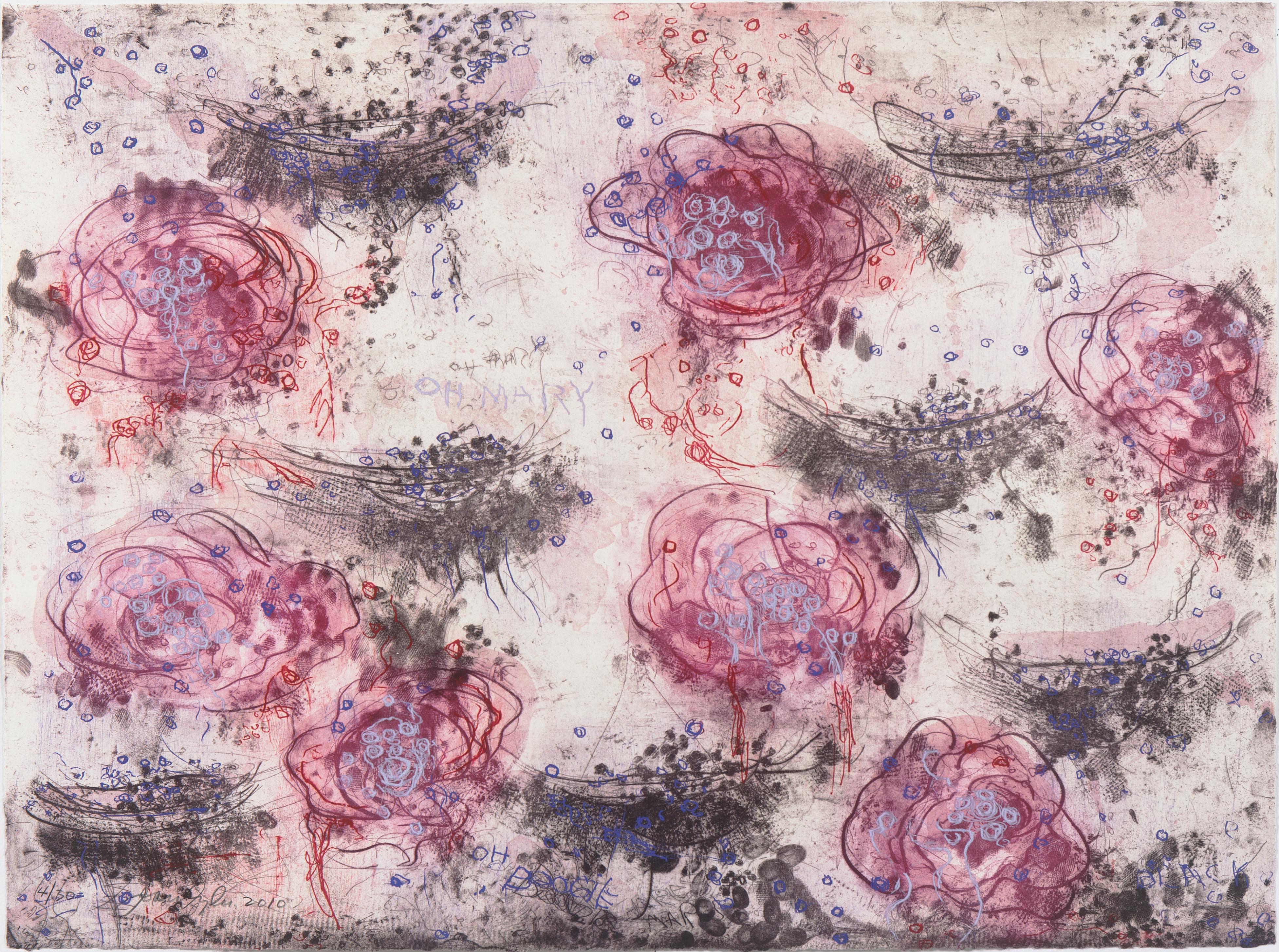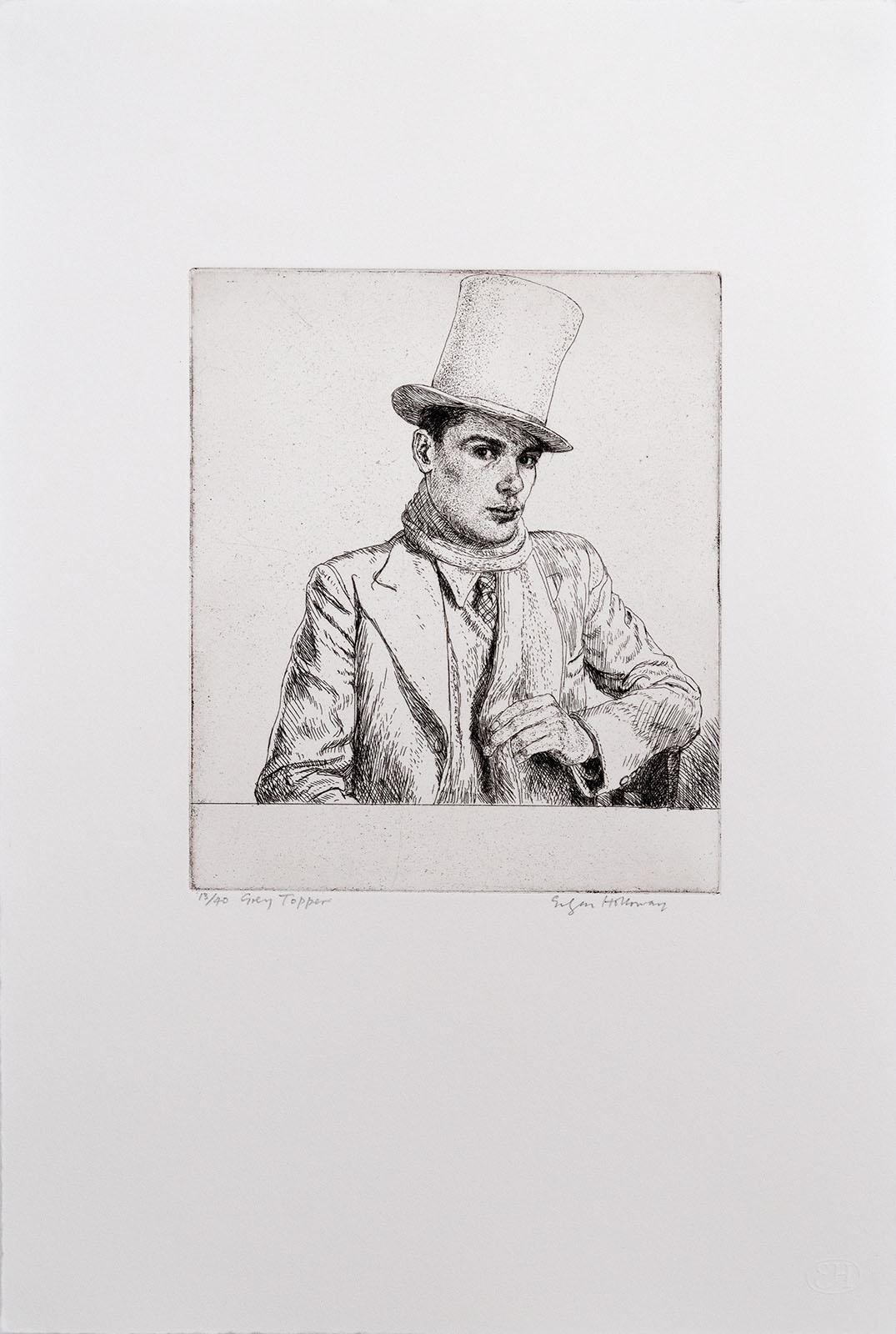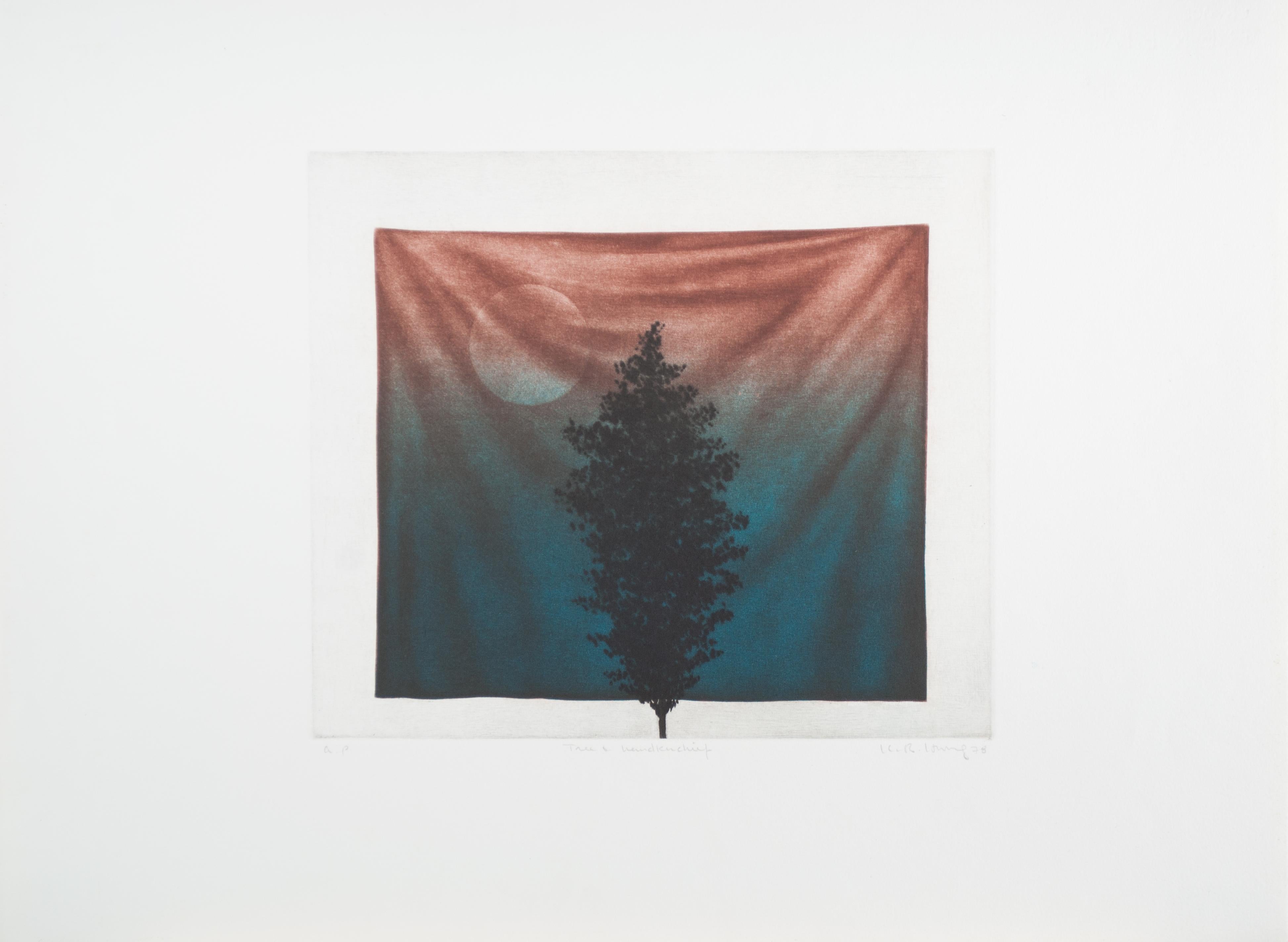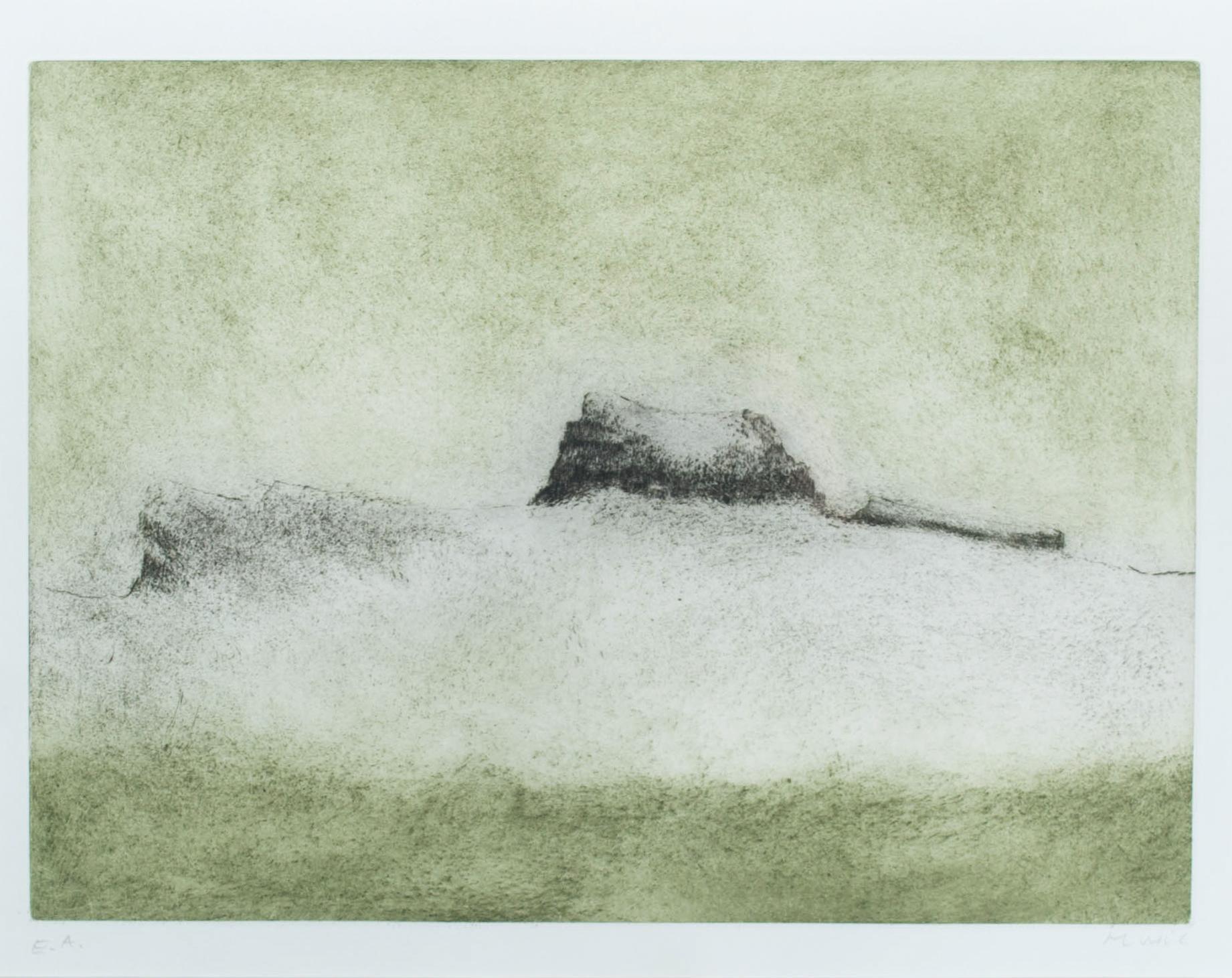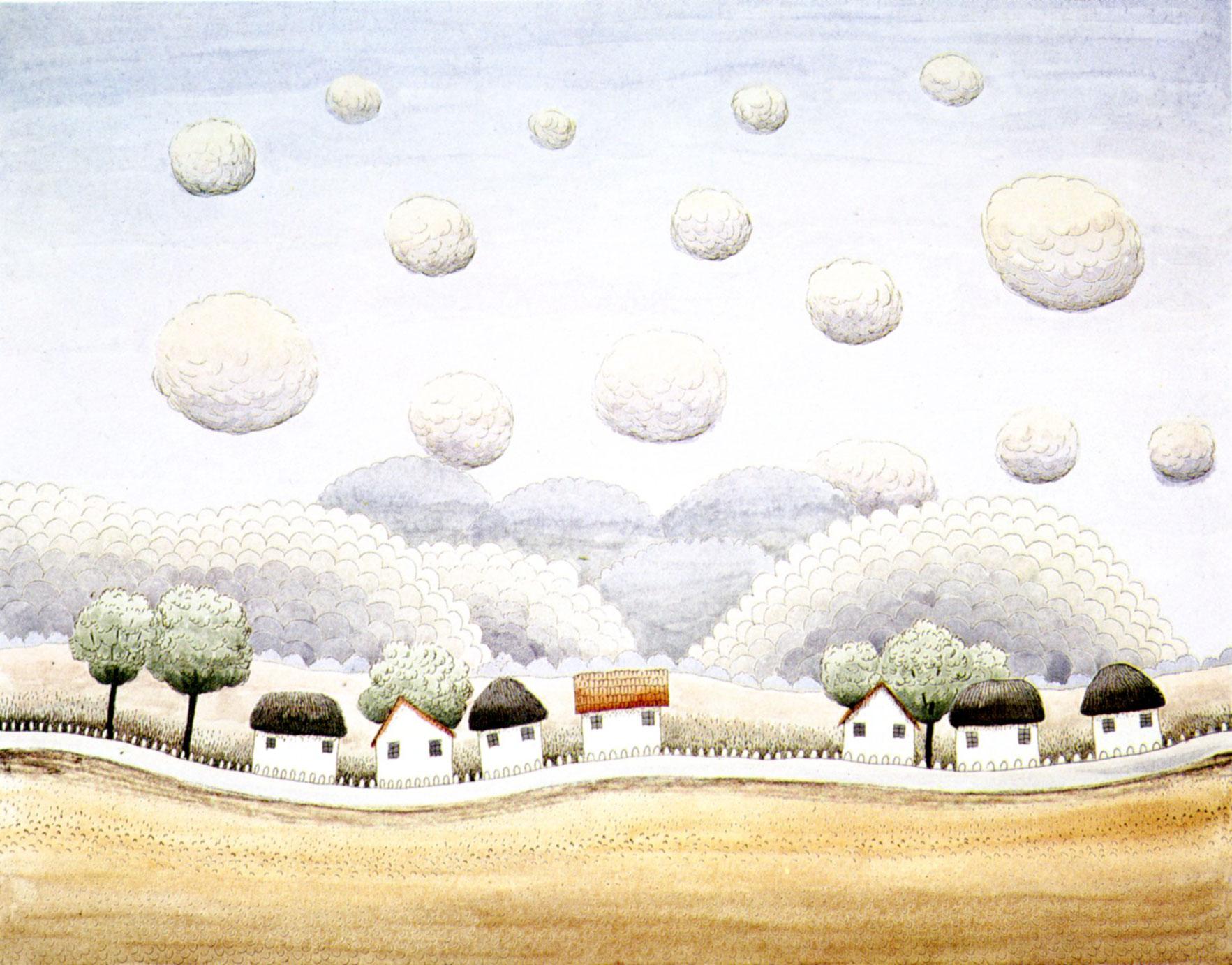Lelia PissarroVeronique on the Pass by Lélia Pissarro - Coloured etching
About the Item
- Creator:Lelia Pissarro (1963, French)
- Dimensions:Height: 3.75 in (9.5 cm)Width: 4.73 in (12 cm)
- Medium:
- Period:
- Condition:
- Gallery Location:London, GB
- Reference Number:1stDibs: LU261213122842
Lelia Pissarro
Lélia Pissarro was born in Paris on the 27th of July in 1963, the third and youngest child of the artist Hugues-Claude Pissarro and Katia, an art dealer.
From infancy until the age of 11 Lélia was entrusted to the care of her grandparents, Paulémile Pissarro and his wife Yvonne, and her interest in drawing and painting was nurtured by Paulémile whilst living in Clécy, Normandy. Paulémile taught her the fundamental Impressionist and Post-Impressionist techniques as had been taught to him by his father and his brothers, and so began her love for figurative art. She sold her first canvas to Wally Findlay, a New York art dealer, when she was only four years of age!
Before his death, Paulémile made Lélia promise to retain her family name, to continue painting and to make art her life.
At the age of 11, Lélia returned to Paris to live with her parents and it was then that she had her first exhibition at the "Salon de la Jeune Peinture" where she was, in all probability, the youngest ever exhibitor.
Hugues-Claude, whose style veered towards conceptual art, took over from Paulémile as Lélia’s teacher and consequently she practiced drawing on a daily basis.
At 15 Lélia participated in an exhibition at the Luxembourg Museum in Paris and a year later, having excelled in a special examination, enrolled at the Ecole des Beaux-Arts in Tours. With her parents dividing their time between France and California, Lélia found herself moving between Tours, Paris and San Francisco.
During this period Lélia became dissatisfied with conceptual art and reverted to the family's traditional creative roots, which distanced her from her avant-garde teachers. However, during the late 1980s, as the figurative style once again became fashionable, Lélia’s work gained in popularity.
Whilst in Paris, Lélia taught art at the Moria School and studied oil painting restoration under Madame De Pangalleria at the laboratory of the Louvre and during this time had solo exhibitions in Paris, Lyon, Mulhouse and Rennes.
Following her marriage in 1988 to David Stern, the London art dealer, she moved to London, where her studio has become a meeting place for artists and friends and where conversation and tuition generate an exchange of opinions on drawings, pastels, watercolours, oil paintings and engravings.
In 1999 Lélia became one of the founders of the “Sorteval Press,” a group of artists dedicated to developing their skills and techniques in etching and printmaking. Their first exhibition took place at the Mall Gallery in London, and the artists’ efforts ensured a highly successful first exhibition.
Balancing her role as artist and mother to three children, Lélia has successfully exhibited not only in London but also in Japan, South Africa, France, Switzerland and Israel. In the United States, Lélia's work has been shown in New York, Boston, Washington D.C., Dallas, San Francisco and Los Angeles.
Following the tradition of her great-grandfather Camille Pissarro, her grand-father Paulémile and her father Hugues-Claude, this fourth-generation artist has played an important role by participating in a series of exhibitions entitled “Pissarro — The Four Generations.”
(Biography provided by Stern Pissarro Gallery)
- ShippingRetrieving quote...Ships From: London, United Kingdom
- Return PolicyA return for this item may be initiated within 7 days of delivery.
- Le Village de Landel by Paulémile Pissarro - etchingLocated in London, GBSOLD UNFRAMED Le Village de Landel by Paulémile Pissarro (1884 - 1972) Etching 17.2 x 23.7 cm (6 ¾ x 9 ⅜ inches) Signed lower right, Paulémile-Pissarro and numbered lower left, 2e e...Category
20th Century Post-Impressionist Landscape Prints
MaterialsEtching
- Jardin de la Villa à Brantôme by Paulémile Pissarro - Etching PrintLocated in London, GB*UK BUYERS WILL PAY AN ADDITIONAL 20% VAT ON TOP OF THE ABOVE PRICE Jardin de la Villa à Brantôme by Paulémile Pissarro (1884 - 1972) Etching 20.5 x 28.5 cm (8 ⅛ x 11 ¼ inches) Sign...Category
20th Century Landscape Prints
MaterialsEtching
- Effet de pluie by Camille Pissarro - Landscape etchingBy Camille PissarroLocated in London, GBEffet de pluie by Camille Pissarro (1830-1903) Etching, aquatint and drypoint 15.9 x 21.3 cm (6 ¹/₄ x 8 ³/₈ inches) Stamped with initials C.P. lower left and numbered 7/14 lower righ...Category
1870s Impressionist Landscape Prints
MaterialsDrypoint, Etching, Aquatint
- La rentrée du Berger by Camille Pissarro - EtchingBy Camille PissarroLocated in London, GBLa rentrée du Berger by Camille Pissarro (1830-1903) Etching 7.6 x 10.9 cm (3 x 4 ¹/₄ inches) Stamped with initials C.P. lower left, and numbered 13/18 lower right This work was crea...Category
1880s Impressionist Landscape Prints
MaterialsEtching
- Paysage à Asquins by Paulémile Pissarro - Wood Engraving PrintLocated in London, GB*UK BUYERS WILL PAY AN ADDITIONAL 20% VAT ON TOP OF THE ABOVE PRICE SOLD UNFRAMED Paysage à Asquins by Paulémile Pissarro (1884 - 1972) Wood engraving 9.7 x 15.5 cm (3 ⁷/₈ x 6 ¹/₈...Category
20th Century Landscape Prints
MaterialsEngraving, Wood
- Series - Monet's House by Lélia Pissarro - ScreenprintBy Lelia PissarroLocated in London, GBSeries - Monet's House by Lélia Pissarro (B. 1963) Serigraph 38 x 48 cm (15 x 18 ⁷/₈ inches) Signed and numbered Printed in an edition of 300 Artist's Biography: Born in Paris in 19...Category
21st Century and Contemporary Post-Impressionist More Prints
MaterialsScreen
- Wild RosesBy Joan SnyderLocated in Brooklyn, NYWild Roses, 2010 Lithograph/etching/woodcut 28 3/8 × 38 3/8 in 72.1 × 97.5 cm This print combines etching, lithography, and woodcut to create a great variet...Category
2010s Contemporary Landscape Prints
MaterialsEtching, Lithograph, Woodcut
- Folio of 6 etchings and engravingsLocated in Llanbrynmair, GB’Folio of 6 etchings and engravings'. A portfolio of six etchings (Originally 7 but etching Number 1, Sef Portrait, is missing from this folio) and engravings produced by Merivale ...Category
Early 20th Century Other Art Style Landscape Prints
MaterialsEtching
- Tree & HandkerchiefBy K.B. (Kyu-Baik ) HwangLocated in Ljubljana, SITree & Handkerchief. Original color aquatint and etching, 1978. Edition of A.P. (artist’s proof) signed and numbered impressions on Arches paper. Kyu-Baik Hwang is contemporary painter and printmaker, from South Korea. He served in the military during the Korean War, and after the war he began to paint. Latter, he traveled across Europe and America and got inspired by many of their cultures and artists. Displacing ordinary objects from their original environments, typical for his works is often compared to Surrealist’s art from the 20th-century. Unlike surrealists, who rejected mind control...Category
1970s Post-Modern Landscape Prints
MaterialsEtching, Aquatint
- AverauLocated in Ljubljana, SIOriginal color drypoint and etching, 1975. Edition of E.A. (artist’s proof) signed and numbered impressions on Arches paper. Zoran Mušič is one of the most celebrated Slovenian artis...Category
1970s Contemporary Landscape Prints
MaterialsEtching, Drypoint
- My VillageBy Ivan RabuzinLocated in Ljubljana, SIMy Village. Original aquatint, 1981. Ivan Rabuzin was a Croatian naive painter and one of the most eminent lyric painters of the 20th century in Croatia. For many years he worked as ...Category
1980s Landscape Prints
MaterialsAquatint
- Memory and Present - The flowing space of memory -Located in Berlin, DEKarl Ludwig Mordstein (1937 Füssen - 2006 Wilszhofen), Memory and Present, 1983. Color etching, copy 41/50, 22.5 x 28 cm (image), 40 x 45 cm (sheet), 43 x 48 cm (frame), titled, numbered, monogrammed and dated with pencil. Framed behind glass. - in very good condition - The flowing space of memory - About the artwork On an implied horizon line, a dog-like animal has risen on its hind legs and is about to jump over some kind of hurdle. To the left, a small flag is waving in the wind. The animal and the flag point forward, toward the reader, into the future. The flagpole, however, bends backwards in the opposite direction, corresponding to the impulse of movement of the sign-like formations in the "sky". The title of this work by Mordstein is also revealing. It reads "Memory and Presence" and thematizes the system of signs above the animal as memory. It is therefore not so much a sky as the space of remembering consciousness. Memory moves into the past, but comes from the future and begins where the animal first moves. Here, Mordstein develops a subtle pictorial philosophy about the character of time and the structure of memory, in which the system of signs representing the content of consciousness is inspired by the pictorial language of Paul Klee, whom Mordstein continues to think about in his own way. About the artist After graduating from the Werkkunstschule in Augsburg, Karl Mordstein worked as a commercial artist in Munich before becoming a freelance artist and concentrating entirely on his own creations. In 1970 Mordstein married the sculptor Sinen Thalheimer and the artist couple moved to Starnberg. In 1972, Mordstein had his first solo exhibition in Munich, which marked the beginning of an active international exhibition career that lasted for decades. From 1987 the couple lived on the Hollerberg in Wilzhofen. "It is certainly not wrong to recognize in the impression of his calmly floating color drawings the expression of a state of mind that owes itself precisely to this conscious turning away from the hectic art market: concentrated serenity. It is not a changing state of mind, but an empathy with the supra-individual rhythms of creation, the perpetual genesis in the natural cycle of becoming and passing, which is expressed in them." - Stefan Tolksdorf Selected Bibliography Karl Mordstein. Aquarelle, Gouachen 1972 – 1975, Galerie Angst und Orny, München 1975. Juliane Roh: Karl Mordstein. Bilder, Paintings 1976 – 79, Frankfurt a. M. 1979. Siegfried Salzmann (Text): Karl Mordstein. Arbeiten auf Papier, Galerie Dorothea van der Koelen, Mainz 1982. Galerie Heimeshoff (Hrsg.): Karl Mordstein. "Seelen-Notate"; Bilder, Arbeiten auf Papier, Bildkästen; 1985 – 1988, Essen 1988. Stefan Tolksdorf (Text): Lebenszeichen. Mordstein, Karl und Sinen Thalheimer, Essen 2009. GERMAN VERSION Karl Ludwig Mordstein (1937 Füssen – 2006 Wilszhofen), Erinnerung und Gegenwart, 1983. Farbradierung, Exemplar 41/50, 22,5 x 28 cm (Darstellung), 40 x 45 cm (Blattgröße), 43 x 48 cm (Rahmen), in Blei betitelt, nummeriert, monogrammiert und datiert. Hinter Glas gerahmt. - in sehr gutem Erhaltungszustand - Der fließende Raum der Erinnerung - zum Kunstwerk Auf einer angedeuteten Horizontlinie hat sich ein hundeartiges Tier auf die Hinterläufe erhoben und setzt zum Sprung an, um eine Art Hürde zu überwinden. Links daneben weht eine kleine Fahne im Wind. Das Tier und die Fahne weisen in Leserichtung nach vorne, in die Zukunft hinein. Die Fahnenstange biegt sich allerdings in die gegenteilige Richtung nach hinten und entspricht damit dem Bewegungsimpuls der zeichenhaften Gebilde am ‚Himmel‘. Auch bei diesem Werk Mordsteins ist der Titel aufschlussreich. Er lautet „Erinnerung u. Gegenwart“ und thematisiert das Zeichensystem über dem Tier als Erinnerung. Daher handelt es sich weniger um einen Himmel als um den Raum des erinnernden Bewusstseins. Die Erinnerung zieht in die Vergangenheit, kommt aber von der Zukunft her und beginnt dort, wohin sich das Tier erst bewegt. Mordstein entwickelt hier eine subtile Bildphilosophie über den Charakter der Zeit und die Struktur der Erinnerung, wobei das für den Bewusstseinsinhalt stehende Zeichensystem von der Bildsprache Plau Klees inspiriert ist, den Mordstein hier auf seine Art...Category
1980s Abstract Abstract Prints
MaterialsEtching
